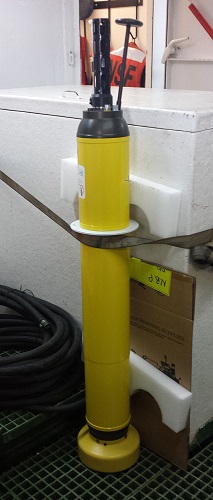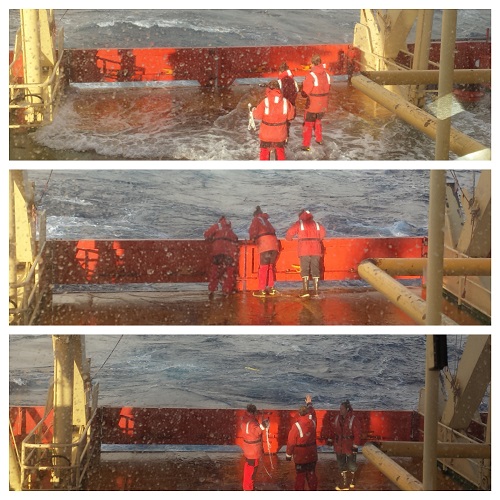Today we started deploying the first in a series of Argo floats. Although not directly related to the research we are doing on the cruise, many Antarctic research trips will assist other researchers by deploying or retrieving equipment since it can be difficult to get to this area.

Argo is an international system of about 3,600 floats that measure temperature, salinity, and currents (and sometimes a few other things depending on the float) of the world’s oceans. They’ve been operating since the early 2000s and use floats across all of the oceans to make real-time global ocean data available to any country in the world.

This data is used in climate and oceanographic research. It can be used to create ocean and weather models, look at temperature changes in water masses, study large scale ocean circulation and movement, understand changes in currents and flow, as well as assist with many other projects like understanding how oil spills will travel to.
The floats are easy to deploy (though the rough weather makes it a little harder on the Marine Technicians deploying them)—you just place them in the water. Since they are water activated, they automatically turn on when they are placed in the ocean. They fill with water and descend to about 1000m, collecting temperature and salinity data. Every 10 days or so they descend to 2000 meters, still collecting data, and then resurface to transmit their data and GPSA Global Positioning System (GPS) is a satellite-based navigation system used to track the location or position of objects on the Earth’s surface. location by satellites to the Argo network.
The floats are battery operated and have a lifespan of about 5 years. After they’ve run past their limit, sometimes scientists try to recover the floats. However, the floats can occasionally be lost in currents and sea ice. The newer floats have special programing that tells them if the temperature is such that they might get stuck in sea ice and prompt them to dive to avoid getting trapped.
To deploy this float, the crew slowed the ship to about 1 knot. The awesome Marine Technicians on the boat took the float out onto the back deck, lifted it over the rail by hand and just placed it in the water with a simple hand line. And then the float just started working. Super easy! No equipment needed! However, it was still a little too rough for the rest of us to be allowed out on the weather decks so we watched from a control room upstairs. We’ll continue to deploy floats for the next couple of days at predetermined places.



Comments